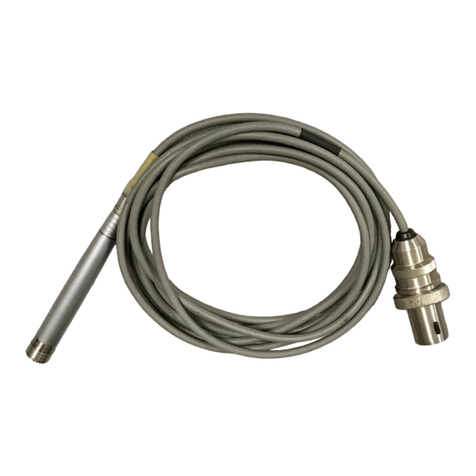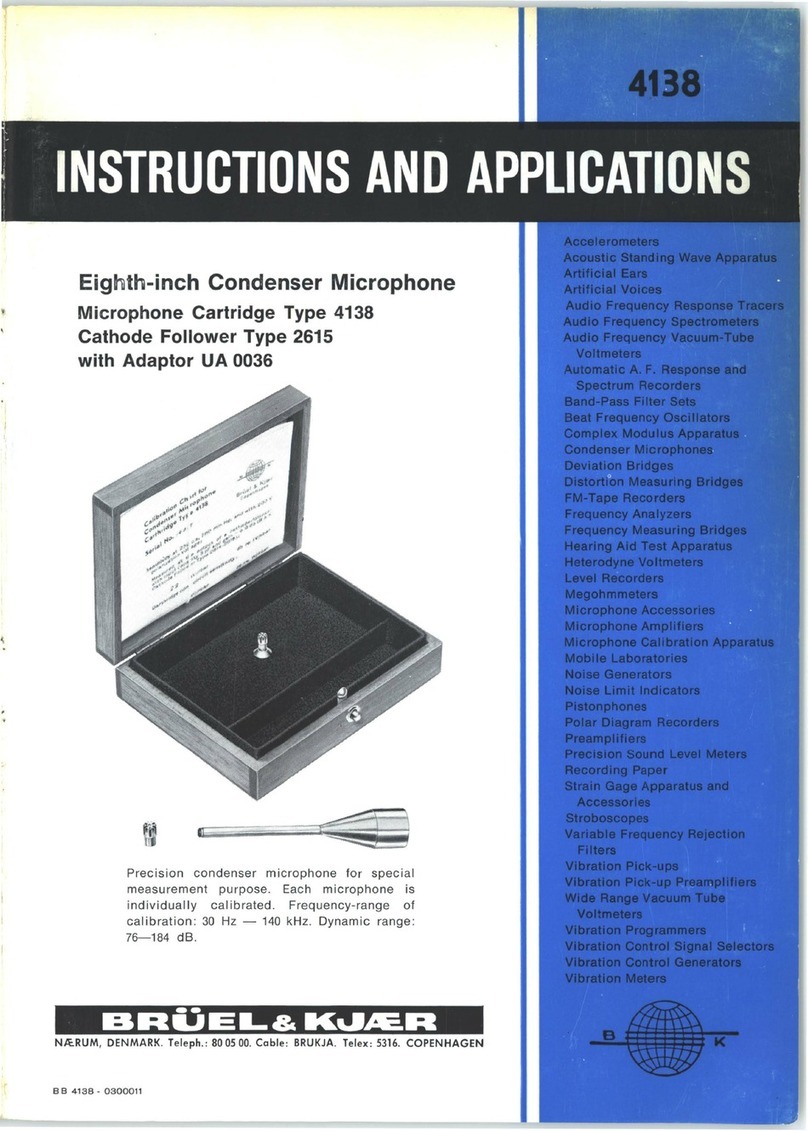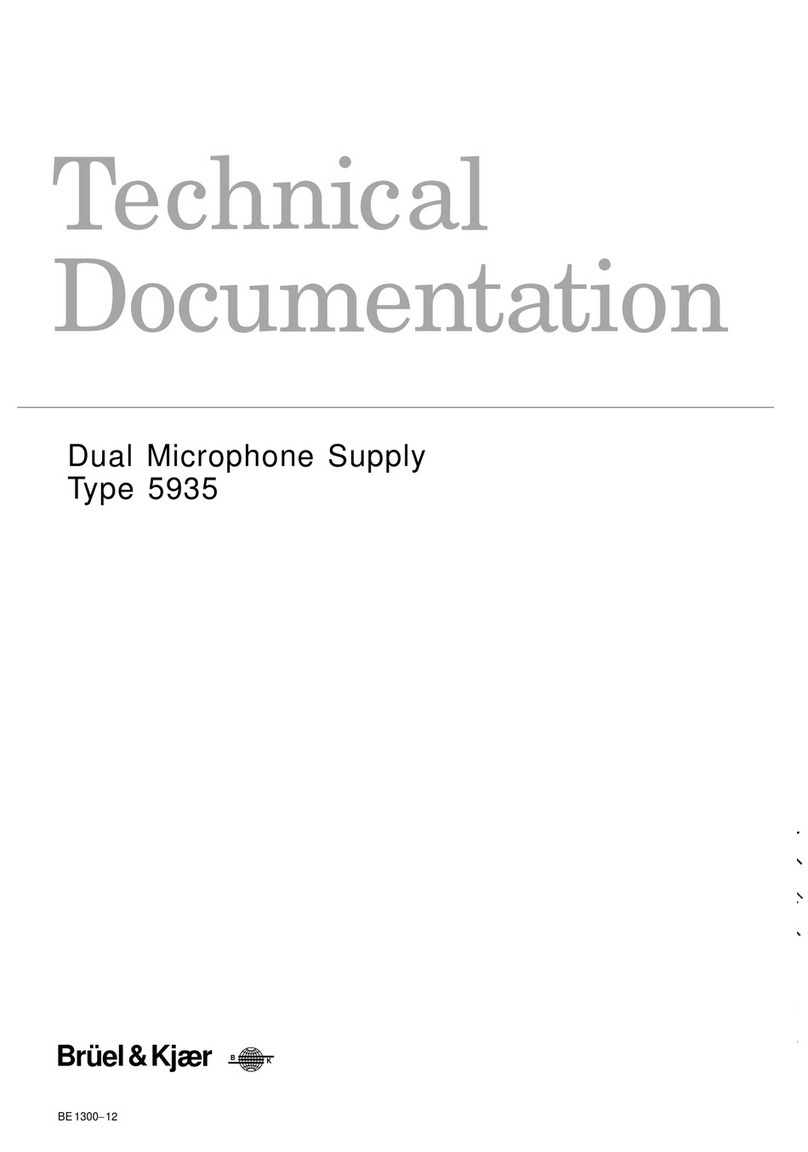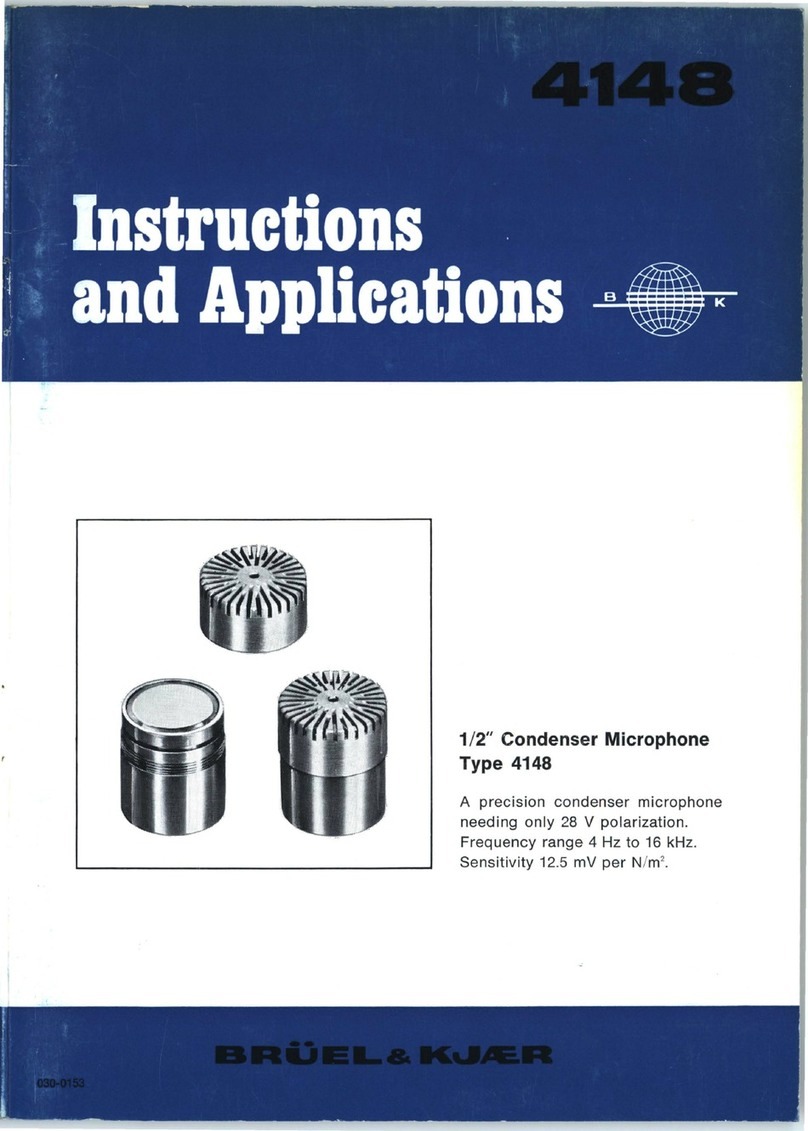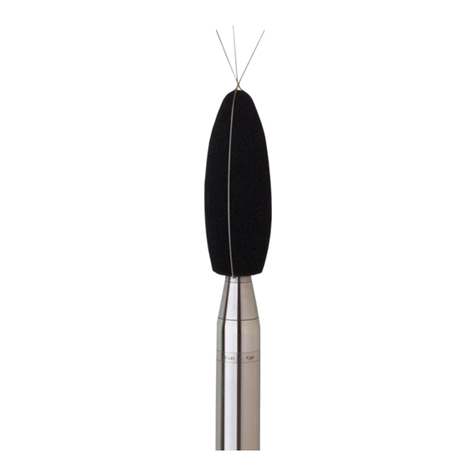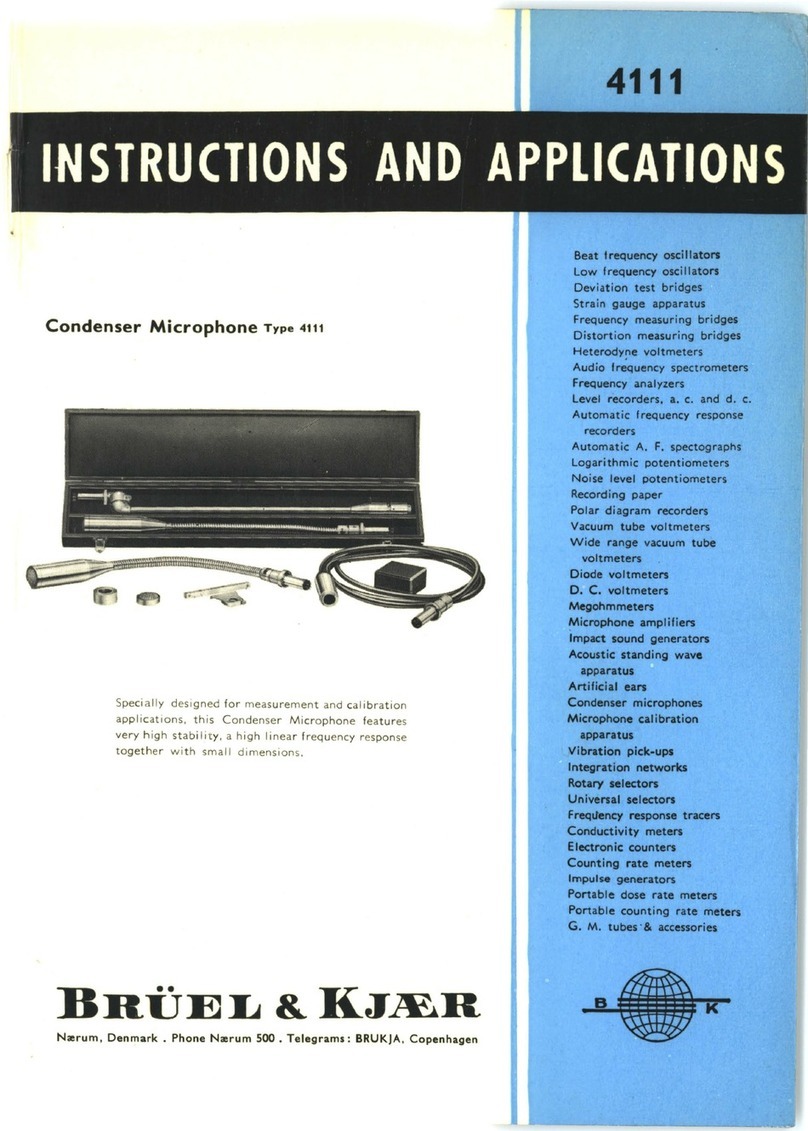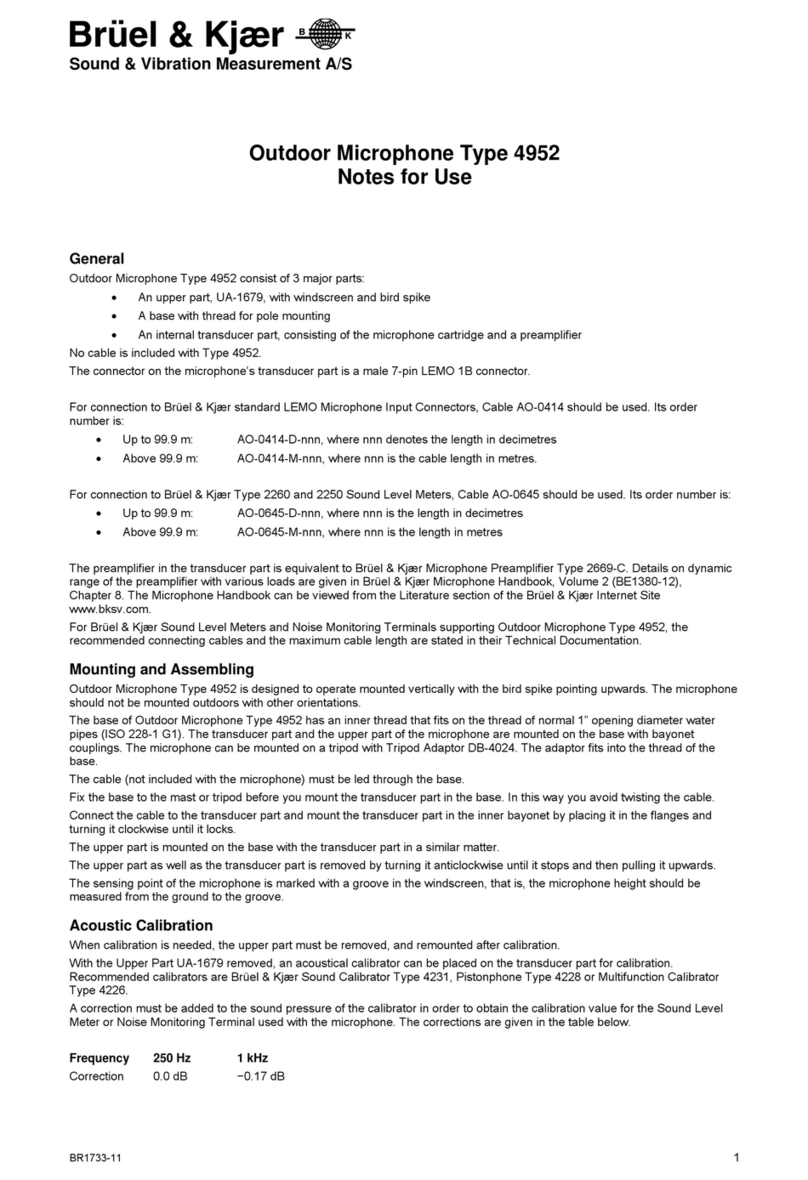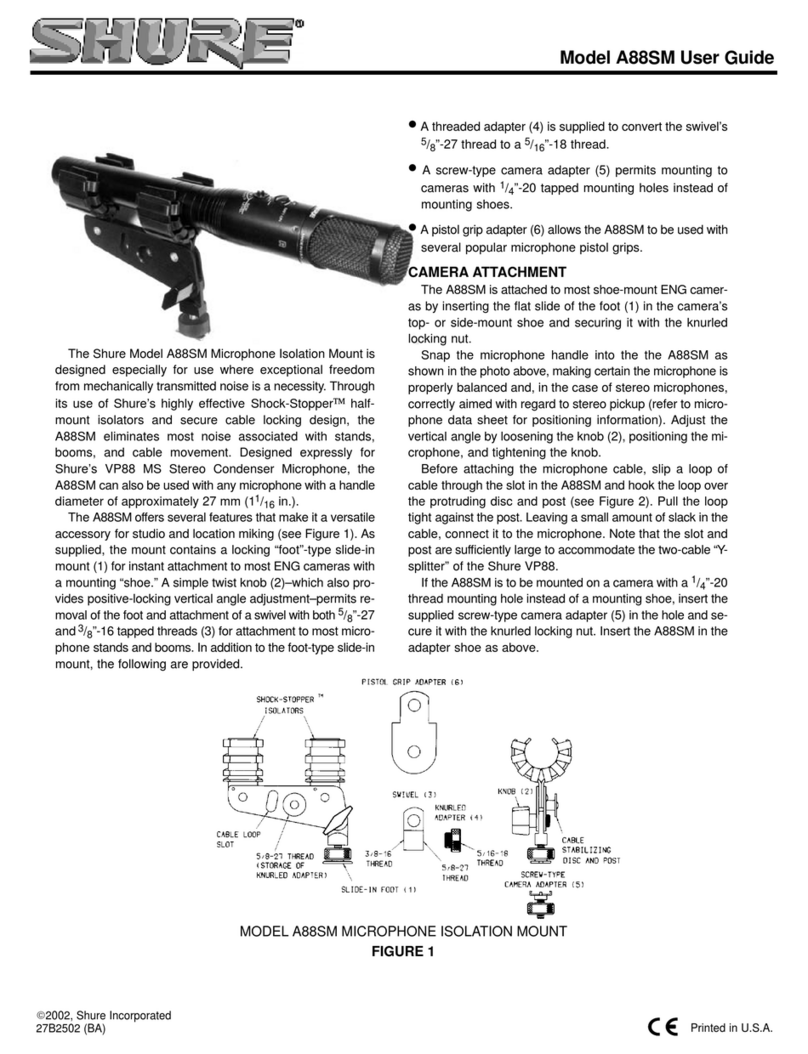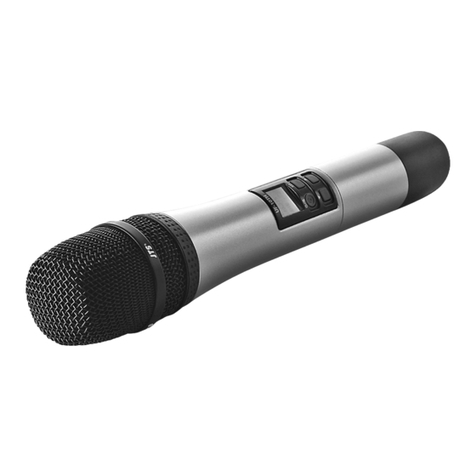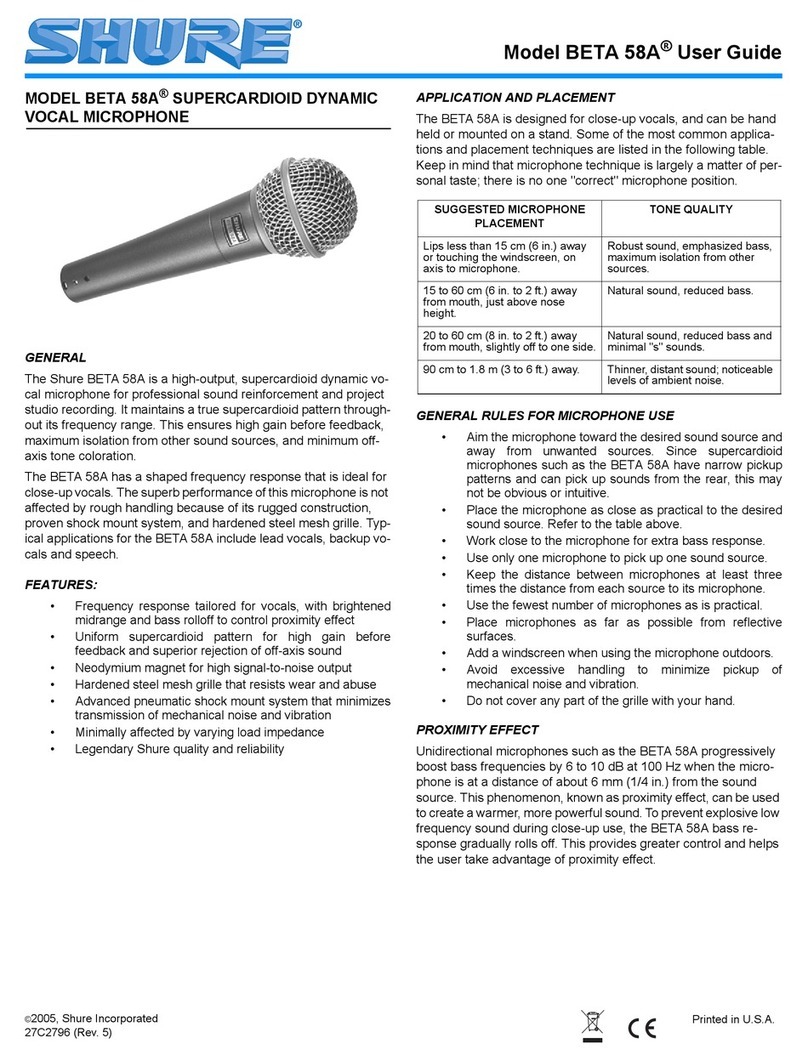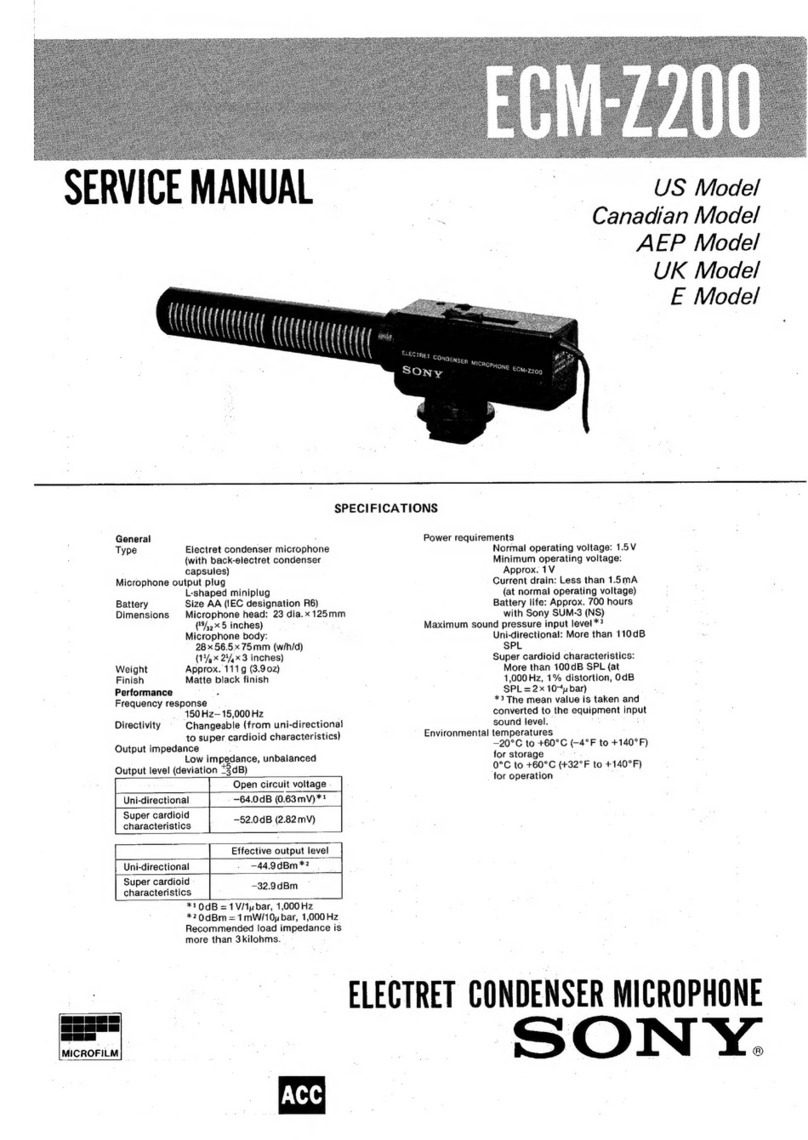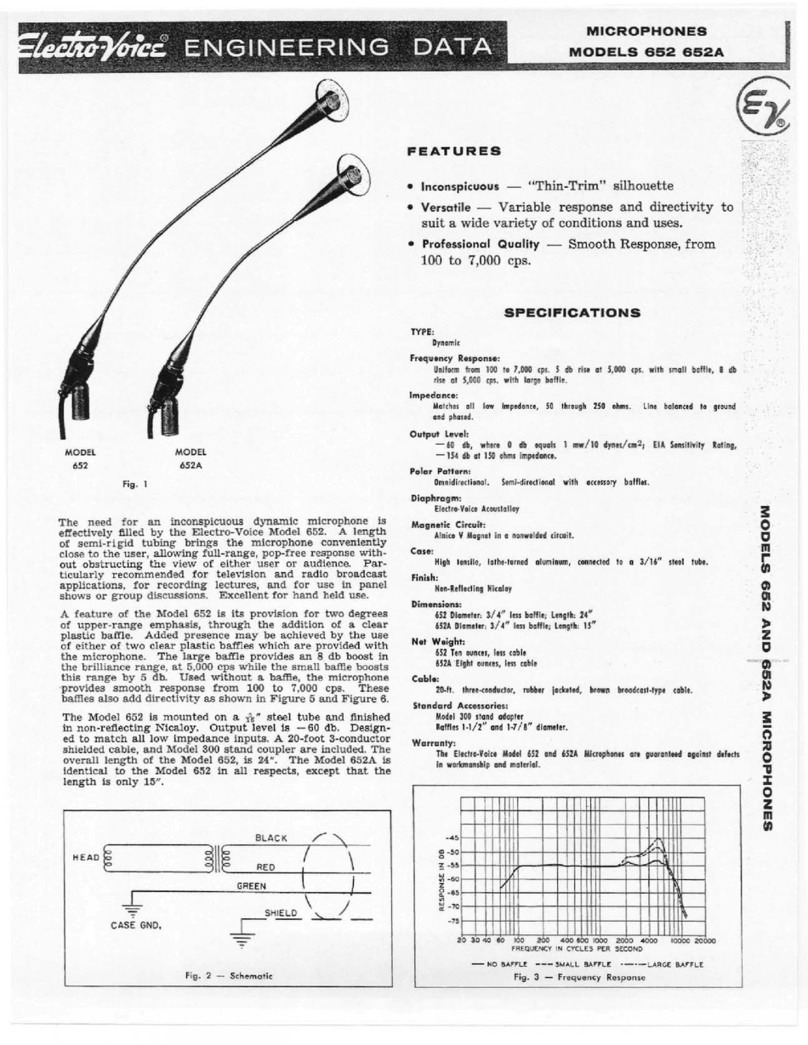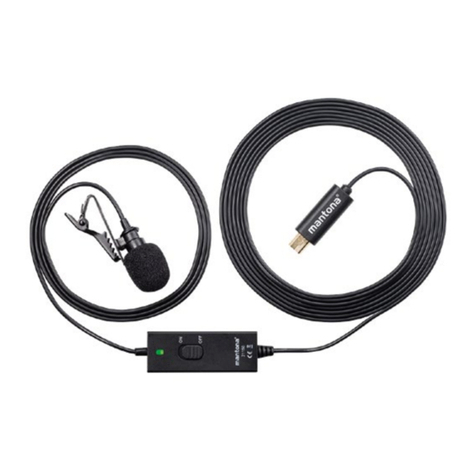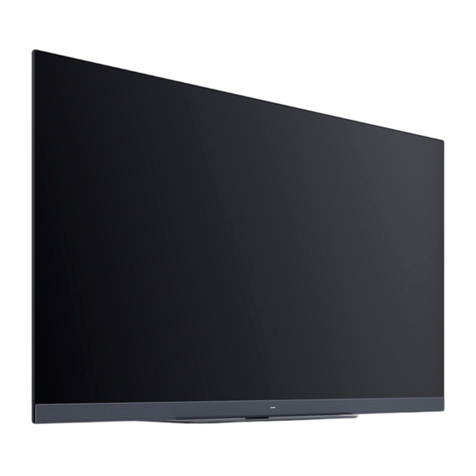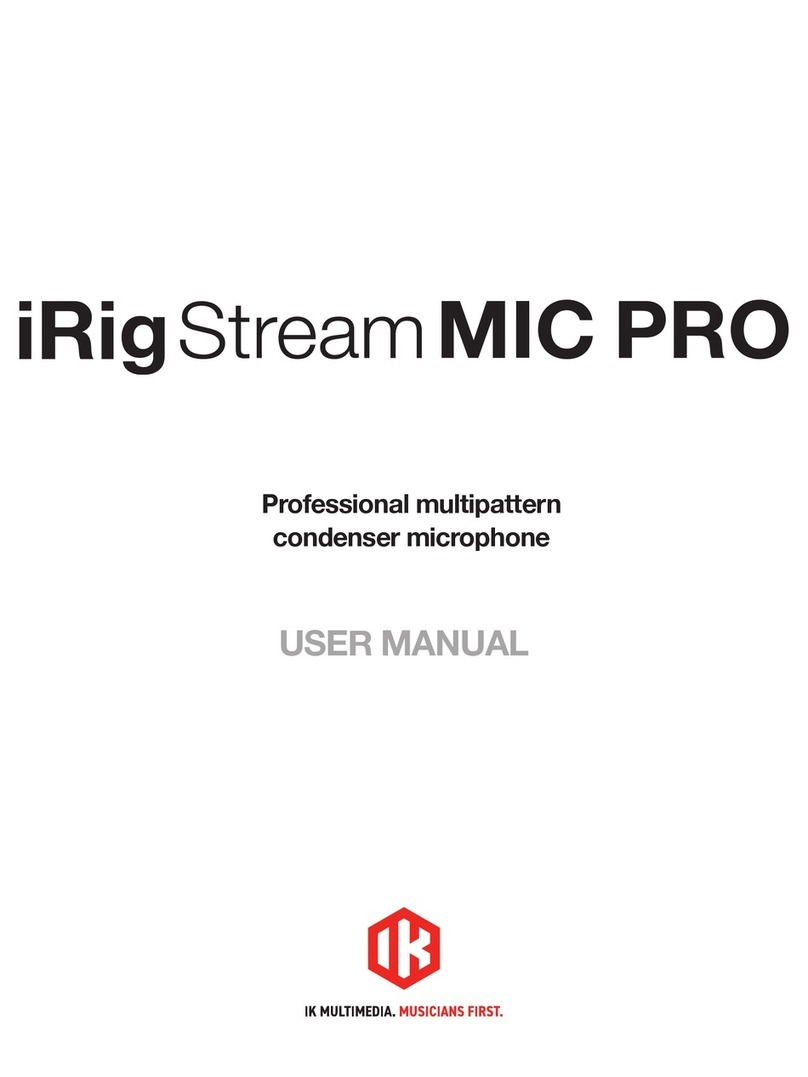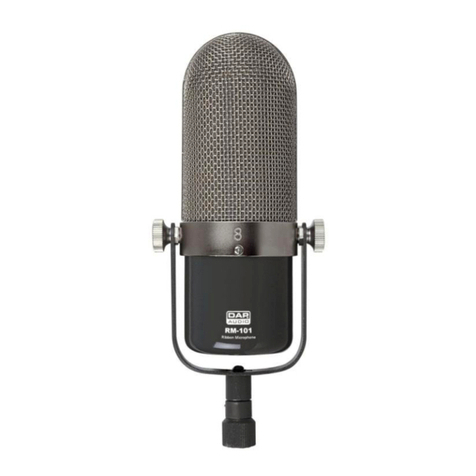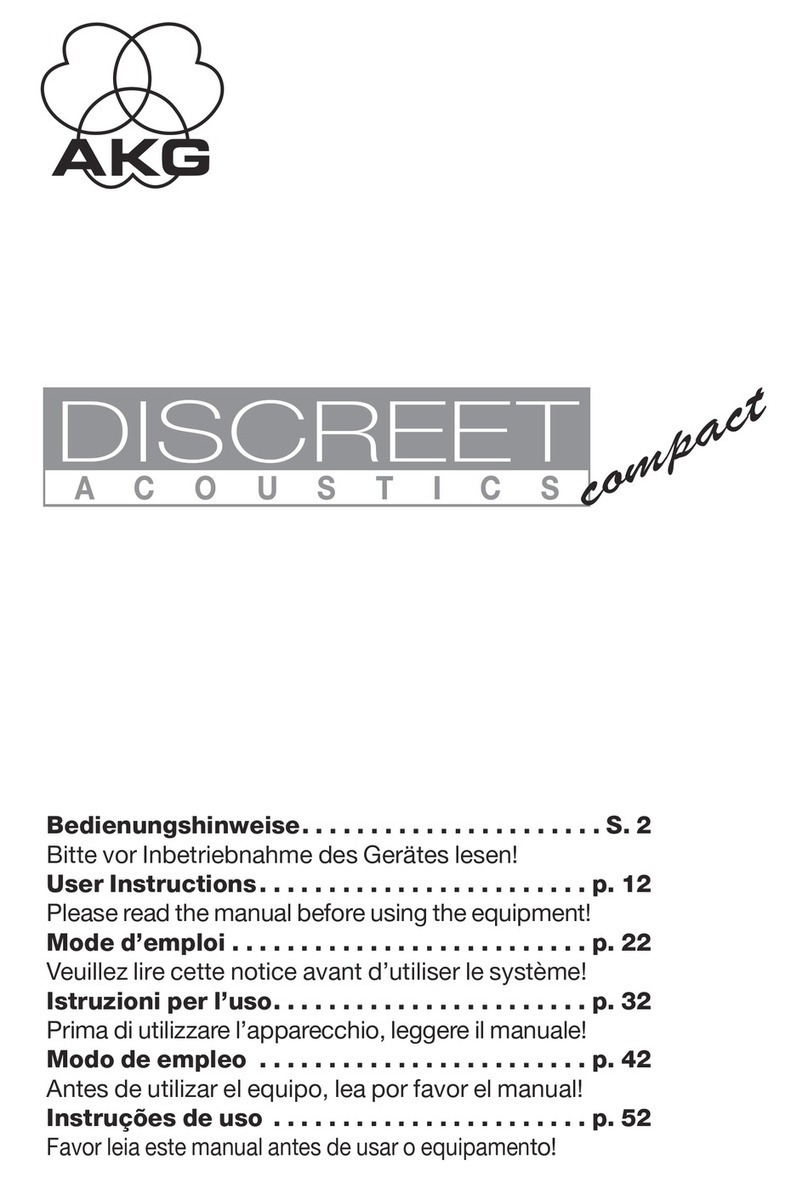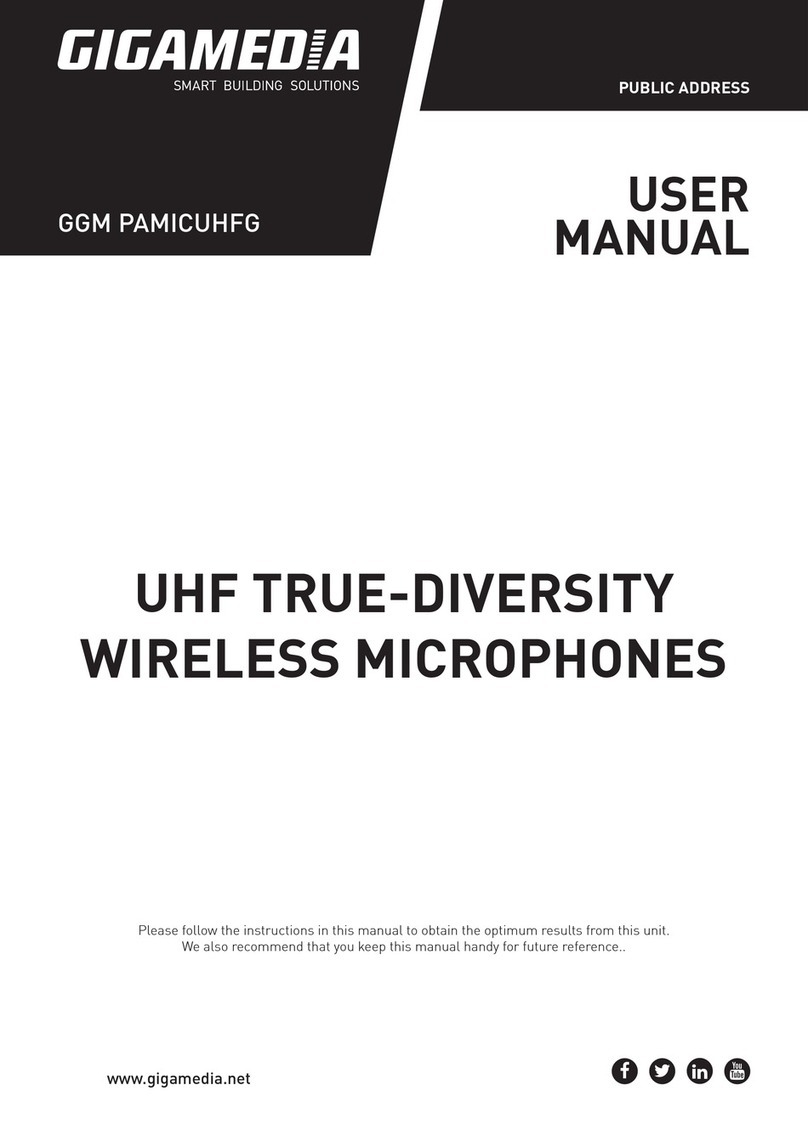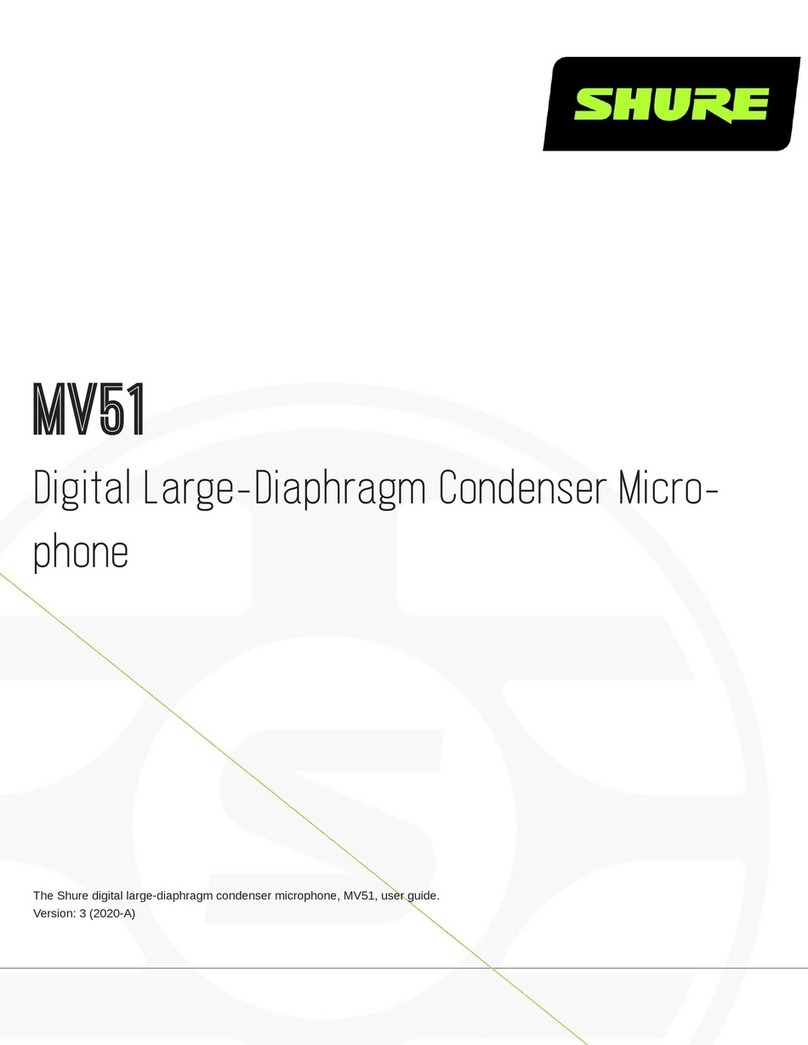
Contents
1. Introduction . . . . . . . . . . . . . . . . . . . . . . . . . . . . . . . . . . . . . . . . . . . . . . .. . . . . . . 5
1.1. Purpose
of
the Piezoelectric Microphone . . . . . . . . . . . . .. . .. . . . . . 5
1.2. Definitions
of
Free-Field and Pressure Response . . . . . . .. . .. . . . . . 5
1.3. Random Incidence Response ·(Diffuse Field Response) .. . . . . . .. . 6
2.
Description . . . . . . . . . . . . . . . . . . . . . . . . . . . . . . . . . . . . . . . . . . . . . . .. . . . . . . . 7
2.1.
Construction . . . . . . . . . . . . . . . . . . . . . . . . . . . . . . . . . . . . . . . .. . . . . . . . . 7
2.2. Sensitivity . . . . . . . . . . . . . . . . . . . . . . . . . . . . . . . . . . . . . . . . . .. . . . . . . . . 9
2.3.
Capacitance . . . . . . . . . . . . . . . . . . . . . . . . . . . . . . . . . . . . . . . . . . .. . . . . . 9
2.4.
Charge Sensitivity . . . . . . . . . . . . . . . . . . . . . . . . . . . . . . . .. . . . . . . . . . . . 10
2.5.
Frequency Response
.........................................
10
2.6.
Free-field Corrections . . . . . . . . . . . . . . . . . . . . . . . . . . . . . . .. . . . . . . ..
11
2.7.
Directional Characteristics . . . . . . . . . . . . . . . . . . . . . . . . . . .. . . . . . . . .
11
2.8.
Dynamic Range
..............................................
11
2.9. Phase Shift
..................................................
12
2.10. Volume Correction
...........................................
12
2.11. Temperature Characteristics
..................................
12
2.12. Influence
of
Ambient Pressure
................................
12
2.13. Influence
of
Humidity
........................................
13
2.14. Influence
of
Vibrations
........................................
13
2.15. Influence
of
Load
............................................
13
2.16. Cable Capacitance Sensitivity Correction
......................
16
3.
Calibration . . . . . . . . . . . . . . . . . . . . . . . . . . . . . . . . . . . . . . . . . . . . . . . . . . . . . . . .
17
3.1.
Sound Level Calibrator Type 4230
..............................
17
3.2.
Pistonphone Type 4220
.......................................
19
4.
Accessories . . . . . . . . . . . . . . . . . . . . . . . . . . . . . . . . . . . . . . . . . . . . . . . . . . . . . .
21
4.1. Microphone Extension Cable AO
0062
..........................
21
4.2.
Microphone Extension Cable AO
0061
. . . . . . . . . . . . . . . . . . . . . . . . . .
21
4.3. Windscreens UA
0082
and UA
0207
. . . . . . . . . . . . . . . . . . . . . . . . . . ..
22
4.4. Miniature Cable AO
0037
...•..................................
23
4.5. Mininoise Cable AC
0010
......................................
23
4.6. Adapter
JP
0028 . . . . . . . . . . . . . . . . . . . . . . . . . . . . . . . . . . . . . . . . . . . . . .
24
4.7. Microphone Stand UA 0049
....................................
24
4.8.
Random Incidence Corrector UA
0055
. . . . . . . . . . . . . . . . . . . . . . . . . .
25
